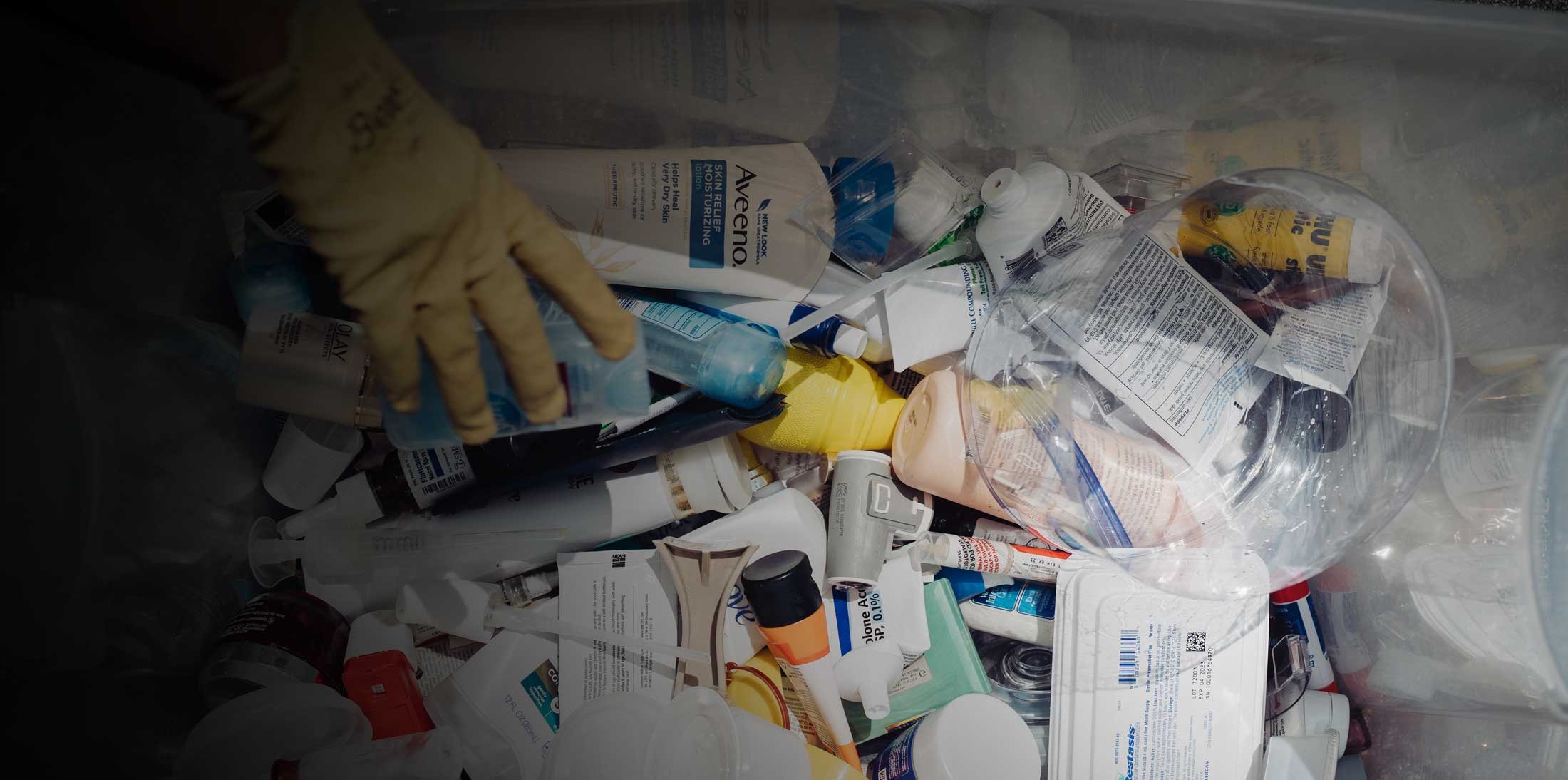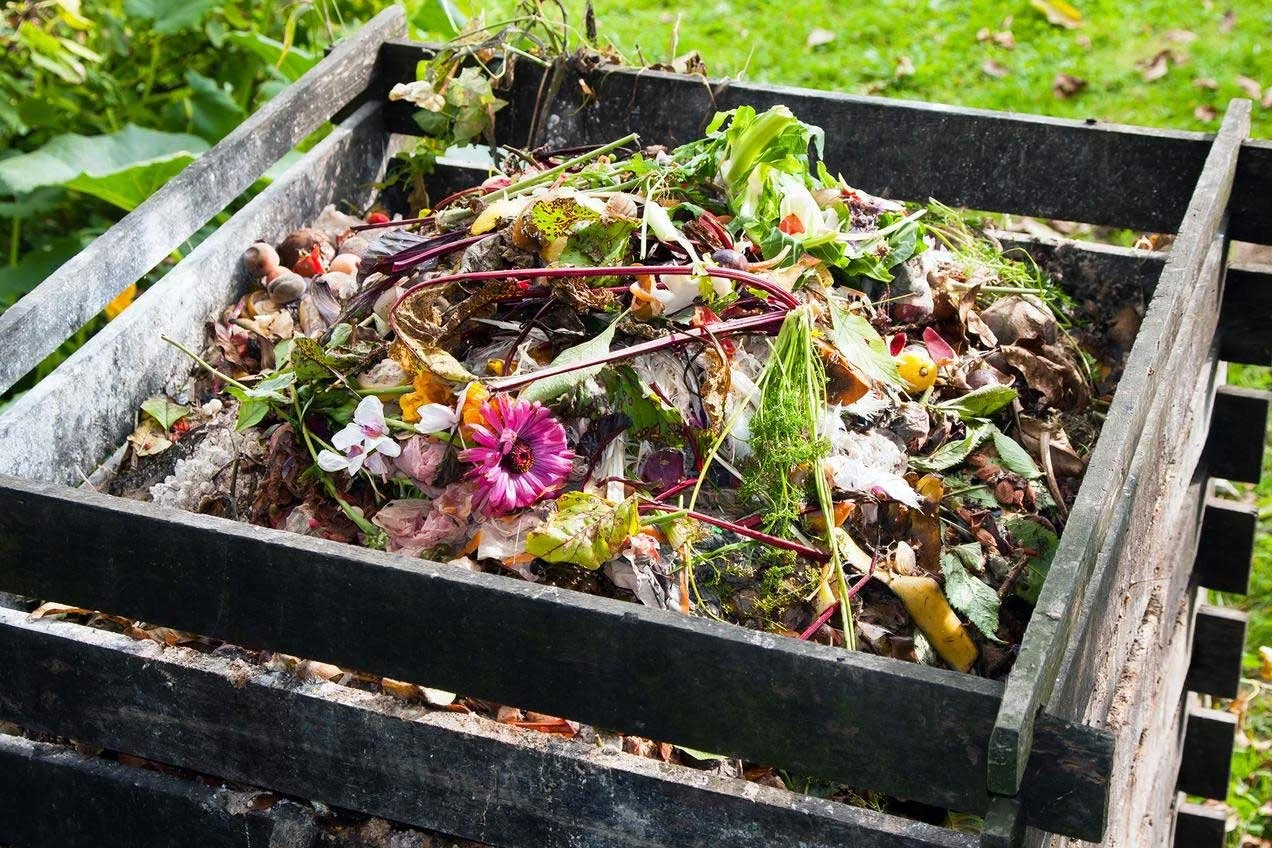
Learn / Waste Reduction
Reduce Your Waste
There is no “away.” Here in Asheville, the trash we toss into our kitchen cans lands at the Buncombe County Landfill in Alexander. That’s why we work so hard to show our neighbors how they can create less waste.
By Far The Number One Question We Get:
“How can I get rid of __________ (fill-in-the-blank)?”
P
The fastest way to figure out how to dispose of something in the City of Asheville is to go to the Waste Wizard. This City of Asheville resource will tell you exactly where you need to take your item to safely get rid of it.
The Definitive List of Accepted Items for City of Asheville Recycling
The following items can be recycled in your blue city bin:
Metal Cans (Aluminum, Steel, Tin)
Only RINSED food, beverage, personal care or household plastic containers (Jugs, Tubs, Bottles and Jars)
Please note that you CANNOT recycle to-go containers, clamshell containers, or any kind single-serve food containers or cutlery.Glass Bottles and Jars (Clear, Brown, Green)
Please note that metal jar/bottle caps/lids can only be recycled if they’re 2” in diameter or larger and screwed on. No loose caps. That means, beer and glass bottle caps must be thrown in the trash.Milk & Juice Cartons, Juice Boxes
Please note that flat pop-on plastic lids go in the trash. Round plastic screw caps can be recycled if they’re screwed on.
Mixed Paper
Newspapers, Inserts, Catalogs, Junk mail
Magazines, Cereal Boxes, Egg cartons (paper)
Envelopes, Manila Envelopes / folders
Office paper, Paper, Phone books (remember those?)
Post-It® Notes, Brown paper bags
Paper towel rolls
Corrugated cardboard (Lay flat under bins)
Absolutely NO PLASTIC BAGS in your blue City Recycling Bin EVER.
Special Notes on Plastic Recycling
Chasing arrows tell you what kind of plastic you’re holding, NOT if it’s recyclable in your community.
Focus on the shape of the item – not the number!
Most municipalities with a single stream recycling program have taught us to put ALL of our plastics containing a chasing arrows symbol into the big blue bin. The problem is that most of these items, even those with numbers inside of chasing arrows, are NOT recyclable in all areas of the country. These numbers only tell you the type of plastic used.
Seven Types of Plastic
In the U.S., there are seven main types of consumer plastics.
Plastic drink bottles are #1 (PETE) plastic. Laundry containers and milk cartons fall into the #2 (HDPE) category. Both are easy and accessible types of plastic for repurposing. Once we move beyond number 1’s and 2’s we veer off the road of easy and profitable remanufacturing to a bumpy unpaved confusing road of disappointment.
Numbers 3 through 7 plastics include a wide range of items such as polystyrene, PVC, cellophane, microwaveable trays and hard plastics. These products make up the majority of plastics that you’ll come in contact with, and not surprisingly, these are the most difficult to recycle. Number 3 through 7’s can be recycled theoretically, but recycling facilities are not available in every city because of the economics.

Let’s Talk About Those Plastic Grocery Bags
Never ever ever ever put plastic grocery bags in your city recycling bin.
There’s probably a close-to-you place to recycle plastic films, like those dread plastic grocery bags, but it's NOT IN YOUR BLUE CITY BIN. They tangle up the machinery in the recycling facility and create a whole nightmare. The good news is that many grocery stores collect their bags back. Learn more about which items are accepted, and where, at www.nextrex.com.
Recycling FAQ
We strive to educate the general public about recycling in our area.
Though our organization is not a recycling facility, we do host our Hard 2 Recycle collection events four times per year in Buncombe County and twice in Henderson County.
We receive A LOT of questions about what can (and can’t) be recycled – and where. We want you to know everything we know, so here are the top items that GreenWorks receives questions about. We know that recycling can be hard to keep up with. Thanks for doing your part to recycle right!
Bonus Tips
1. Repair, repurpose, or regift before you recycle! Check out community Facebook pages like WAX, Buy Nothing Asheville, and the marketplace, or your own social media and other networks to see if your items can benefit someone else in the community.
2. Utilize the City of Asheville's Waste Wizard to search for solutions to items that can't be recycled in your curbside bin.
3. Recycle items throughout the year, especially large items - this helps make life easier for us at Hard 2 Recycle events.
4. Precycle - Due diligence goes a long way when considering how you can replace needed items. Research companies who offer no or low-waste shipping, purchase items that can be easily reused or recycled when you're done. And consider buying an item second-hand instead of new.
5. Those blue bags aren't recyclable! - As misleading as it is, those blue "recycling" garbage bags are not recyclable! They go to the landfill just like all other plastic bags that you may put in your bin. Collect loose items in your curbside bin, or use paper bags if you need to transport them.
6. When in doubt, throw it out - We hate throwing things away, too. If you've made your way through this entire post, utilized these resources, and still don't know what to do - that item may need to go to the landfill. DON'T fall victim to "wishful recycling" - a practice of putting everything in your recycling bin in hopes that someone will recycle it. You'll likely end up contaminating entire batches of recycling, which means those batches have to go to the landfill, and will put a strain on the workers and companies who have to sort through your recycling and pull those items from the line.

Waste Reduction at Work
Offices are often bursting with wastes of all kinds. From plastic to paper to food we take our waste with us to work. You may be wondering how to tackle office waste and inspire your colleagues to do the same. Find out how YOU can lead that effort!
Get Started with Composting
Whether you're an avid gardener or just want to reduce the waste you send to the landfill, we all have reasons to compost... learn how!





